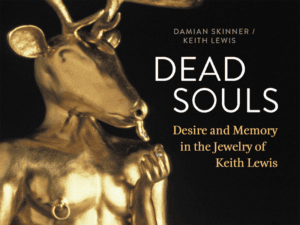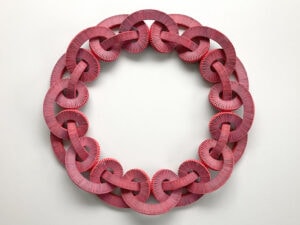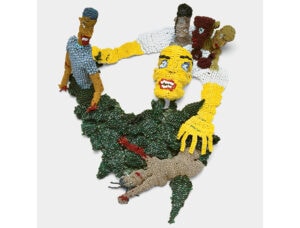Whether you would enjoy this weighty book (399 pages) or prefer to give it a pass depends on how you view yourself as a collector and how interested you are in the broad field of contemporary European (particularly German) jewelry.
Whether you would enjoy this weighty book (399 pages) or prefer to give it a pass depends on how you view yourself as a collector and how interested you are in the broad field of contemporary European (particularly German) jewelry.
Reinhold Ludwig, the former general editor of Schmuck Magazin, does not pretend to have an international focus, nor is he an expert on ‘art jewelry.’ However, he offers detailed and thoughtful information on later twentieth-century European jewelry, concentrating on top of the line manufacturers, studios and leading designers who have succeeded in making work that is both artistic and commercially successful.
The book begins with a short history of jewelry from the Arts and Crafts movement to World War II, followed by the post-war goldsmithing renaissance, including pioneers like Max Fröhlich, Sigurd Persson, Friedrich Becker, Klaus Ullrich, Hermann Jünger and that great duo Emmy van Leersum and Gijs Bakker. The central section – on glossy paper with bigger than life-size photographs, mostly one to a page – displays the work of over 80 contemporary jewelers, many, if not most, of whom will be unfamiliar to American collectors. Needless to say, the work is superbly crafted, with the sheen of excellence acquired through long apprenticeships with European schools and older, established designers.
The author has arranged this impressive collection in chapters with titles such as ‘Clear Form and Minimalism,’ ‘Colored Precious Stones in a New Light,’ ‘Jewelry as Sculpture,’ ‘Variable Jewelry Systems,’ ‘Traditional Values with Modern Influences’ and ‘New Signs and Symbols.’ Probably the most visually daring is a small chapter on the concepts of young jewelry designers. Each of the supersized photographs has a short caption where Ludwig attempts (with variable success) to highlight the special features of the design.
The most interesting section of the book gives detailed profiles of 63 jewelry designers and modern manufactories, amply documenting why Germany is still such a powerhouse in the field. It also shows the interconnectness of the jewelry world and the blurring of frequently made distinctions between ‘art jewelry,’ ‘one-offs’ or ‘production jewelry.’ Well-designed work in weird materials can be artistic and precious; innovative gem-cutting or unusual designs with traditional pearls or gemstones can still be ‘art.’ And the sometimes intensive training received by these artists shows the web of apprenticeships from leading professors, distinguished artists and commercial studios which helps develop skill, inspiration and, ultimately, success.





